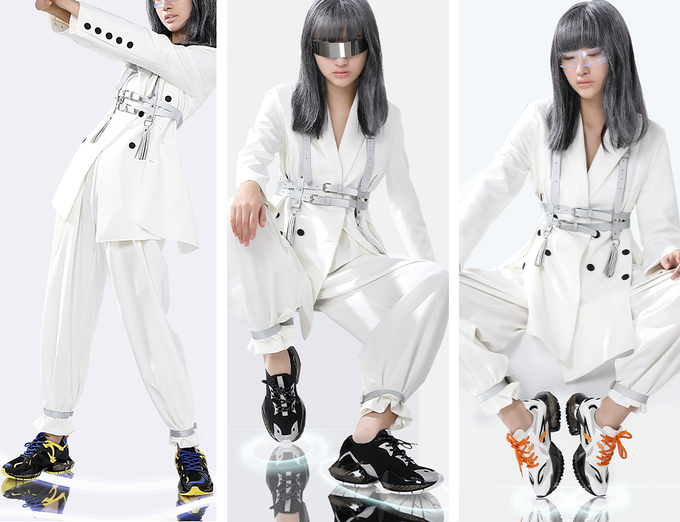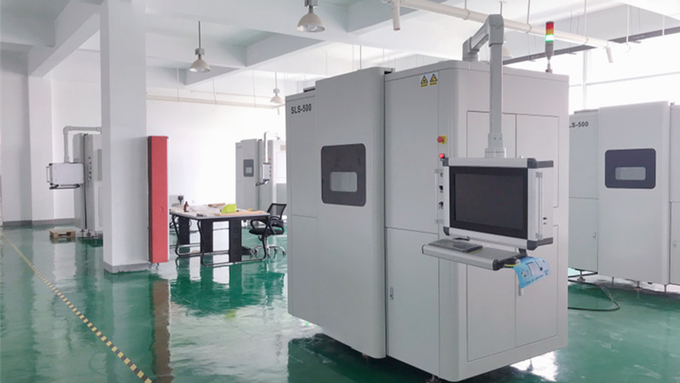For a deeper-dive into additive manufacturing, you can now subscribe to our Youtube channel, featuring discussion, de-briefs and shots of 3D printing in-action.
Hong Kong-based footwear design start-up Me Next has announced the launch of an eponymously-named sneaker with “groundbreaking” shock absorption capabilities.
Based around an aerospace-inspired 3D printed buffering structure, the firm’s sporty new footwear is designed to absorb impacts during exercise, protecting wearers from injury and fatigue. Set to launch in October 2021, the high-tech trainers are now available for backing on Kickstarter, where they have so far raised around $3,000.
“We created Me Next with a ‘Gradient Sandwich Structure,’ a concept developed in the aerospace industry to absorb huge amounts of energy and provide high tech protection,” said Leon Xia, CEO of Me Next. “With this groundbreaking buffer structure, innovative shock absorption, and breathability, Me Next provides the ultimate in comfort and protection for any activity as well as everyday wear.”

An aerospace-influenced design
Naturally, in the process of walking, our feet repeatedly come into contact with the ground, sending minor shockwaves through our bones and joints. According to Me Next, people’s feet suffer 600-700 of these tiny impacts for each kilometer walked, and when they wear footwear with insufficient buffering, they can become prone to knee or spinal injuries.
To help address this problem, and aid our weary limbs, Me Next has taken inspiration from the impact-resistant gradient structures seen within aerospace parts to create a novel insole design. Composed of three layers, including a shock-absorbing bottom, energy-storing middle and transmissive top, the center of the sports shoe’s structure is specifically designed to be SLS 3D printed from TPU.
The midsole itself consists of 762 cushioning units, which protect the pressure points of wearers’ feet, and provide sufficient breathability to prevent the build-up of odorous moisture. Based on these features, Me Next says that its new sneakers are not only ideal for everyday wear, but more intensive workouts such as cross-training, cycling, HIIT or jogging.

Personalized, eco-friendly footwear
As well as providing users with comfort and breathability, Me Next’s unique midsoles are based on a recyclable TPU, potentially making them more eco-friendly and durable than those in normal running shoes. Likewise, the firm is offering three different sneaker iterations, with its ‘Shadow’ penguin-colored variant designed to highlight Antarctica’s melting polar ice caps.
Elsewhere, Me Next’s new trainers are also set to be available in the separate yellow and black ‘Sailor’ sports car-inspired and ‘Sunday’ Sichuan Opera-based versions, through which the firm says its customers can “express different personalities in a unique way.”
Since establishing its gradient sandwich structure concept in October 2019, the company has successfully tested three different sneaker prototypes, with the final version approved for production in March 2021. Moving forwards, Me Next intends to begin preparing materials in August, entering manufacturing a month later, before shipping early bird orders in October and starting mass shipping in November 2021.
Me Next’s Kickstarter still has a month to run, but it has already raised $3,000, significantly more than its admittedly-low initial target of around $250. Those interested in trying out the 3D printed trainers can nab themselves a pair for $199 via the firm’s Kickstarter page, where two pairs are currently priced at $298 and three are available for $417.

Design innovation in running wear
Additive manufacturing is one of the sporting footwear industry’s worst-kept secrets, and a number of world’s biggest brands have adopted the technology to enhance their existing designs. Back in September 2019, for example, New Balance worked with Formlabs to introduce a latticed 3D printed heel into the design of its 990 Sport sneaker.
Reebok, meanwhile, has integrated its ‘Liquid Factory’ concept into the layout of its Floatride Run shoes, by shipping them with 3D printed ‘liquid laces’ and lightweight grips. Based on a custom-made BASF-formulated material, the trainers crossover at the front, providing wearers with a stretchy and flexible ‘lace free’ fit.
Adidas has also worked consistently with Carbon, using its DLS 3D printing technology to create entirely new midsole designs. The firm has steadily iterated its Futurecraft 4D trainers since their launch in 2017, releasing the Futurecraft STRUNG last year before the more recent ‘4DFWD’ running shoes, which are set to be worn by athletes at the Tokyo 2020 Olympics.
To stay up to date with the latest 3D printing news, don’t forget to subscribe to the 3D Printing Industry newsletter or follow us on Twitter or liking our page on Facebook.
Are you looking for a job in the additive manufacturing industry? Visit 3D Printing Jobs for a selection of roles in the industry.
Featured image shows Me Next’s 3D printed sneakers on a beach. Image via Me Next.



